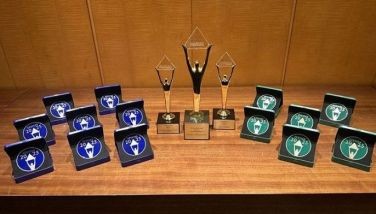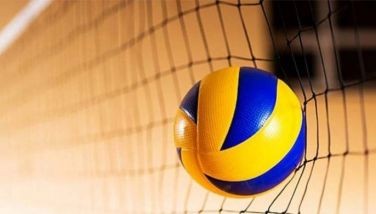Diving For Fun At Balicasag
April 8, 2001 | 12:00am
(First of two parts) |
This is a scuba diver’s paradise, one of the best in the world.
The island, in the middle of the sea, has the shape of an inverted crab, Bali-Casag in the vernacular (where the island got its name), and is the top of a massive structure that survived time after the Great Deluge.
After the last upheaval of the seas, living things  plants and animals  died and decayed as the mountains lay submerged, making calcium deposits which were to bring forth new life forms across the veil of centuries.
Seaweeds came into life. The cliffs and slopes became miles of reefs on which corals formed vast, colorful sunken gardens where fishes from the ocean’s depths sought refuge, spawned, played and survived.
Today, thanks to government action that stopped rampant dynamite fishing and use of cyanide in the 50s, Balicasag has preserved much of the pristine charms of an environment where life began.
There are fine corals that produce bright colors, mushroom leather corals with brownish hues and bubble and magnificent anemones as transparent as jellyfish, and pore corals that look like tiny, green grapes on soft stones.
There are many others.
There are table corals, a huge plate of colorful floral arrangements, mushroom and column corals and great fan corals swaying in the current like a field of flowers dancing with the gentle breeze. They abound with staghorn corals, bush corals and ridge corals that come to life on the walls of the cliff or its overhang or crevices, their colors heightened or beautifully refracted by the broken rays of the summer sun.
However, these are for your eyes only. Scuba divers have an international code they follow religiously whenever they make underwater sorties  never to touch any coral, much less dig one and bring it to the surface  and it is the unwritten law of the world of scuba divers not to catch any fish although they could hold one, albeit fondle it gently, to preserve what was there before they came.
Some divers prefer to commune with nature at night, using flashlights to enjoy the rich coral growth and get a closeup view of fishes attracted to the lights and perhaps wonder if they ever sleep with open eyes.
Scuba diving, the masters assure, is the most thrilling adventure in water and one needs only to get comfortable with diving gears  a wet suit, air tanks, weights around the waist, fins  and be able to inhale and exhale automatically with the mouth in the regulator, clear the mask of water and remove pressure out of your ears while going down to enjoy what is under the water.
There are diving schools that teach all these skills, which include swimming pool dives and later the open sea dives. One is the Scuba World in Makati, where Glen van der Merwe, a South African, teaches mostly expats.
One of his students is Mirriam Quiambao, the petite 1999 Miss Universe first runner-up, who made her first open sea dive last week in filming a TV feature of Bohol.
When one has mastered all the skills and is ready for the big plunge, a diver eventually also gains the confidence to plunge to the deep. A tourism writer who was given an intro dive on the spot, was able to go 20 feet deep after a 30-minute familiarization with the scuba diving equipment.
Once he is comfortable with the gears, and with the able guidance of a dive master who is with him wherever he is in the water ("don’t worry, if you die, I will also die"), the new diver looks at the world underneath not as a House of Horror but a bigger-than-life theater that awes the diver with the infinite diversity of marine life one never imagined.
The Philippine Tourism Authority, which is running the Bohol diving resort, offers a three-in-one package which includes dives in nearby Pamilacan Island, the realm of the devilfish and seasonal haven of dolphins, and Cabilao Island which puts you face to face with menacing hammerhead sharks.
Divers agree that there are no two similar dive sites, because each spot has its own attractions, and the scenes vary as you swim sideways, with the current or against it, swim on the ridge or dive further down.
Divers who have been here keep coming back. Jessie Bautista, dive master here during the last 10 years, knows every square inch of coral reef, and enjoys it again and again everytime he goes in.
Like other scuba divers longing for the beauty of the world beneath the foam, Jess and fellow dive masters  Travis Allan of the PTA, Glen of the Scuba World, Ricky Paul Tio of Cebu and his travel agent Takako Endo from Japan  made as many as six dives each day during the three-day tour organized by the PTA.
To a diver who has been to the depths a hundred times or more, there seems to be no end to the quest of rediscovering what else is in store in the hanging gardens beneath Balicasag’s serene, blue waters.
BrandSpace Articles
<
>
- Latest
- Trending
Trending
Latest
Trending
Latest
Recommended




























